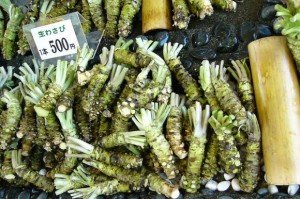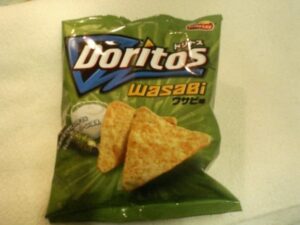Wasabi, the Japanese condiment which offers a delicious kick to the nasal passages with every bite, has long been embraced in Japan, and more recently other parts of the world. However, aside from accentuating sushi or playing jokes on friends, the pungent plant has been found to provide anti-aging effects in recent years.
For those who turn up their noses at the thought of a daily dose of wasabi, you may reconsider when you realize how easy it is to benefit from the sulfinyl found in it. That’s right: it keeps you pretty for longer!
■ Sulfinyl
A lot of what goes on inside of a wasabi plant is accredited to a sulfur/oxygen bond called sulfinyl. When the plant is damaged the sulfinyl is combined with other molecules to make 6-methylthiohexyl isothiocyanate (6-MSITC). Stay with us. In short, this chemical group helps to give wasabi its unique taste, which is believed to be a natural pest repellent.
Studies are also finding that the 6-MSITC created by wasabi can lower the reactive oxygen in the body. Reactive oxygen is said to be related to cancers and the weakening of the body due to age. Other research is suggesting that wasabi’s unique sulfinyl compounds are also good for blood circulation and reflexes.
■ Know your wasabi
So we know that wasabi is great but first you have to make sure you’re actually eating real Japanese wasabi. The wasabia japonica plant is a little tricky to farm and yields don’t tend to meet the demand for it. As a result much of the wasabi sold and served is actually mixed with horseradish known as seiyo wasabi (Western Wasabi) in Japan.
Although the taste is good, horseradish doesn’t have the same 6-MSITC health benefits of its Japanese cousin. So read the label before buying!
Obviously your best bet would be buying a fresh wasabi rootstock, but they can be rather pricy and hard to maintain. After grating, the taste of wasabi dramatically decreases in only minutes.
On the other hand, powdered wasabi would have had most of the 6-MSITC processed out of it. Unfortunately this means that Wasabi Doritos and Wasabi Beef chips, despite tasting awesome, will not prevent aging… they probably accelerate it.
To get the best of both worlds we recommend the wasabi sold in tubes like toothpaste. As long as you check the label, it won’t take much to begin lowering your reactive oxygen.
■ Just a teaspoon a day
According to studies, one would have to consume a minimum of five milliliters (one teaspoon) of wasabi a day to begin recieving the effects of 6-MSICT. You might want to consider a spoonful of it in the place of your morning coffee for a truly potent pick-me-up. Besides, it’ll help clear those tubes during the cold season!
Also, if you happen to not love the spicy zing of wasabi, no problem! Since 6-MSITC is very durable against heat you can just cook it up with something and reduce the nose-burning taste while maintaining the health benefits.
These types of health studies can be shaky at times, so we can’t guarantee eating wasabi will keep you cancer-free. However, it takes almost no effort at all, so why not give it a try? In fact, I’m going to start putting it on my morning McGriddle to try and undo the years of damage it’s no-doubt done to me.






